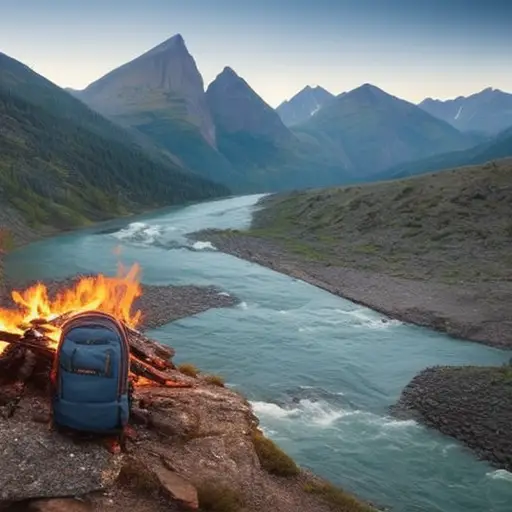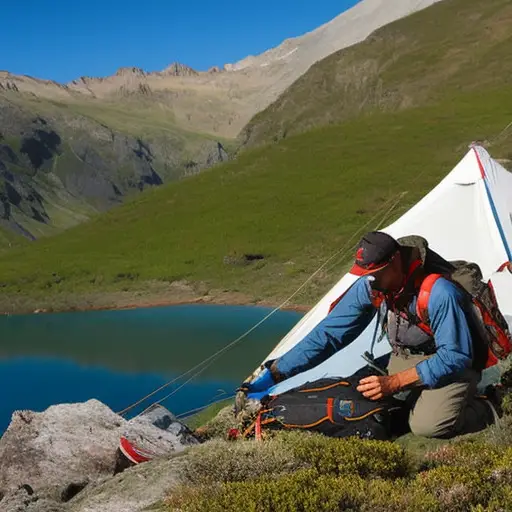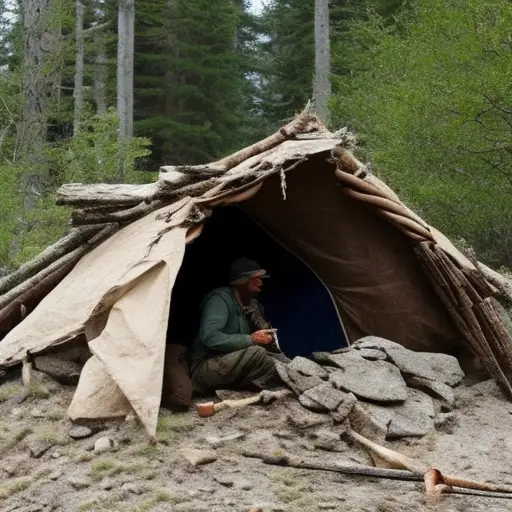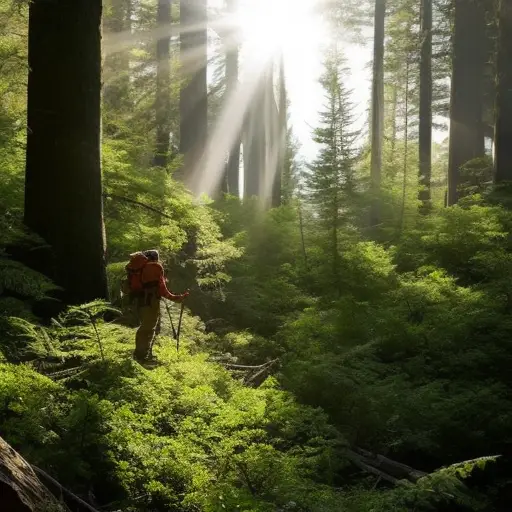Essential Items for a Wilderness Survival Kit

In a world of modern conveniences and digital dependencies, it is easy to forget the importance of being prepared for the unpredictable.
However, venturing into the wilderness demands a level of self-sufficiency that cannot be taken lightly.
This article unveils the essential items for a wilderness survival kit, ensuring that you are equipped to navigate the unknown with confidence.
From a trusty knife to a reliable fire starter, this concise guide will provide practical insights to help you face the challenges of the great outdoors.
Knife
A reliable knife is a crucial tool to include in your wilderness survival kit. When it comes to surviving in the wilderness, a knife serves multiple purposes and can be a lifesaver.
Firstly, a knife is essential for cutting various materials such as rope, branches, and food. It allows you to build a shelter, prepare food, and even fashion tools for other survival needs.
Furthermore, a knife can also be used as a fire starter. Many survival knives come with a built-in fire starter, which can be a valuable asset in emergency situations. The fire starter, usually made of ferrocerium or magnesium, produces sparks when scraped against a rough surface. These sparks can ignite tinder, helping you start a fire for warmth, cooking, or signaling for rescue.
When choosing a survival knife, look for one with a sturdy and durable blade that can withstand heavy use. A fixed blade knife is generally recommended over a folding knife, as it is stronger and less likely to break. Additionally, consider the size and weight of the knife, as you want it to be portable and easy to handle.
Fire Starter
To ensure your readiness for wilderness survival, a reliable fire starter is an indispensable addition to your kit. In the wild, fire serves multiple purposes, including providing warmth, cooking food, purifying water, and serving as an emergency signaling tool. Here are four essential fire starting techniques to consider:
-
Ferrocerium Rod: This compact and lightweight tool produces sparks when struck against a rough surface. It is durable and can be used in wet conditions, making it a reliable option for starting fires.
-
Waterproof Matches: These matches come in a waterproof container and are a reliable backup in case other fire starting methods fail. Remember to store them in a dry place and use them sparingly.
-
Lighter: A dependable lighter is a must-have item in any survival kit. Opt for a windproof and waterproof model to ensure reliability in adverse weather conditions.
-
Firestarter Cubes: These compressed fuel cubes are easy to ignite and burn slowly, providing a steady flame to start your fire. They are lightweight and compact, making them a practical option for your kit.
Having a fire starter in your wilderness survival kit is crucial, as it allows you to create warmth, cook food, purify water, and signal for help in case of an emergency.
Now, let’s move on to the next essential item: shelter.
Shelter
When it comes to wilderness survival, having a reliable shelter is essential. There are various types of shelters to consider, depending on the environment and resources available.
Additionally, insulation is crucial to stay warm and protect yourself from the elements. Exploring lightweight shelter options can help ensure that your survival kit remains portable and easy to carry.
Types of Shelters
Different types of shelters are crucial for wilderness survival. When stranded in the wild, it is important to find or build a shelter to protect yourself from the elements and maintain body temperature. Here are some options for shelters:
- Cave or Rock Shelter: Utilize existing natural formations for protection.
- Lean-to: Construct a simple shelter by leaning branches against a sturdy object, such as a tree or rock.
- Debris Hut: Build a shelter using basic materials like leaves, branches, and moss, creating a small enclosed space.
- Tarp Shelter: Use a tarp or poncho to create a quick and easy shelter, providing protection from rain and wind.
These shelters offer varying degrees of protection and can be adapted to suit the available resources and environment.
Now, let’s explore the importance of insulation in maintaining body heat.
Importance of Insulation
Maintaining proper insulation within a shelter is crucial for wilderness survival, as it helps to regulate body temperature and protect against the elements. Insulation provides a barrier between the body and the surrounding environment, reducing heat loss and preventing hypothermia. It also helps to keep the shelter warm during cold nights and cool during hot days. The benefits of insulation are particularly important in extreme weather conditions, where exposure can lead to serious health risks.
There are various insulation materials that can be used in a wilderness survival kit, such as sleeping bags, blankets, foam pads, and emergency bivvies. These materials are lightweight, compact, and designed to provide maximum insulation with minimum bulk.
Transitioning into the subsequent section about lightweight shelter options, it is important to consider insulation when choosing a shelter to ensure optimal protection and comfort in the wilderness.
Lightweight Shelter Options
Transitioning from the importance of insulation, it is imperative to consider lightweight shelter options for a wilderness survival kit. When it comes to shelter, there are a few options that are both lightweight and practical:
-
Hammock Camping: A hammock can provide a comfortable and elevated sleeping platform, keeping you off the ground and away from insects and dampness.
-
Tarp Shelters: Tarp shelters are versatile and lightweight, offering protection from rain and wind. They can be set up in various configurations, providing flexibility in different terrains.
Both hammock camping and tarp shelters are great options for minimizing weight while still ensuring adequate shelter in the wilderness. They are easy to pack and set up, making them ideal choices for survival situations where mobility and efficiency are crucial.
Water Filtration
One essential item for a wilderness survival kit is a high-quality water filtration system. When venturing into the wilderness, access to safe drinking water is crucial. A water filtration system ensures that you can purify water from natural sources such as rivers, streams, and lakes, making it safe for consumption.
Water purification is vital because untreated water may contain harmful bacteria, parasites, and viruses that can lead to severe illness. A reliable filtration system removes these contaminants, providing you with clean and safe drinking water. Look for a filtration system that is portable, lightweight, and easy to use, as these qualities are essential for survival situations.
Additionally, some water filtration systems come with emergency signaling capabilities. These devices often have built-in whistles or other signaling mechanisms that can help you attract attention in case of an emergency. This feature can be a lifesaver, especially if you find yourself lost or in need of rescue.
Remember to regularly clean and maintain your water filtration system to ensure its effectiveness. Pack extra filters and replacement parts, as they may be necessary during extended wilderness stays.
Navigation Tools
To ensure effective navigation in the wilderness, it is essential to include reliable navigation tools in your survival kit. These tools will help you stay on course and find your way back to safety. Here are four must-have navigation tools for your wilderness survival kit:
-
Compass: A compass is a vital tool for wilderness navigation. It helps you determine your direction and orient yourself on a map. With a compass, you can navigate through unfamiliar terrain with confidence.
-
Map: A detailed map of the area you are exploring is crucial for navigation. It allows you to plan your route, identify landmarks, and avoid potential hazards. Map reading skills are essential for using a map effectively.
-
GPS Device: While traditional navigation tools like a compass and map are reliable, a GPS device can provide additional assistance. It can pinpoint your exact location and help you track your progress. However, it is important to have backup batteries or a solar charger for your GPS device.
-
Altimeter: An altimeter measures your altitude, which is useful for determining your location and tracking your progress. It can help you identify landmarks and avoid hazardous areas with steep slopes.
By including these navigation tools in your wilderness survival kit, you will be equipped to navigate safely and effectively.
Once you have your navigation tools ready, it’s time to move on to the next essential item for your survival kit: the first aid kit.
First Aid Kit
Continuing the discussion from the previous subtopic on navigation tools, it is imperative to include a comprehensive first aid kit in your wilderness survival kit.
When venturing into the wilderness, accidents and injuries can happen at any time, making it crucial to be prepared. The importance of first aid training cannot be overstated. Knowing how to administer basic first aid can make a significant difference in saving lives and preventing further harm. It is recommended to undergo a first aid training course to gain the necessary knowledge and skills.
When assembling a basic first aid kit for your wilderness survival kit, there are several essential items to include. These items should cover a range of potential injuries and be compact and lightweight for easy transport. Some key items to consider are adhesive bandages, sterile gauze pads, medical tape, antiseptic wipes, tweezers, scissors, and disposable gloves. Additionally, it is wise to include a CPR face shield, a thermal blanket, pain relievers, and any personal medications that may be needed.
Remember that the contents of your first aid kit should be periodically checked and replenished as needed. Being prepared with a well-stocked first aid kit and the knowledge of how to use it can be a lifesaver in the wilderness.
Frequently Asked Questions
Are There Any Additional Tools or Equipment That Are Recommended to Include in a Wilderness Survival Kit?
When considering additional tools or equipment for a wilderness survival kit, it is recommended to include a knife and a tarp. These items can provide essential functions such as cutting, shelter, and protection against the elements.
How Often Should the Fire Starter Be Replaced or Replenished in a Wilderness Survival Kit?
The fire starter in a wilderness survival kit should be replaced or replenished periodically to ensure its functionality. However, it is also important to have alternative fire starting methods available as a backup in case the fire starter fails.
What Are Some Common Mistakes People Make When Using Water Filtration Systems in the Wilderness?
When using water filtration systems in the wilderness, common mistakes include not properly maintaining the filter, failing to follow manufacturer instructions, and not regularly cleaning or replacing filter cartridges. Here are some maintenance tips to ensure effective water filtration.
Can Navigation Tools Be Used Effectively in All Types of Terrain, Including Dense Forests or Mountainous Regions?
Navigation tools can be effective in various terrains, including dense forests and mountainous regions. However, their effectiveness can be hindered by factors such as limited visibility and complex topography. Proper training and knowledge are essential for successful navigation in these challenging environments.
Are There Any Specific First Aid Items That Are Essential for a Wilderness Survival Kit but Not Typically Mentioned in General First Aid Kit Guidelines?
Additional first aid items that are essential for a wilderness survival kit, but not typically mentioned in general first aid kit guidelines, include specialized wound dressings, snake bite kits, and emergency dental repair materials. The importance of signaling devices cannot be overstated in a survival situation.
Conclusion
In conclusion, a wilderness survival kit should include essential items such as:
- A knife for multiple purposes
- A fire starter to keep warm and cook food
- A shelter for protection from the elements
- Water filtration to ensure safe drinking water
- Navigation tools to find your way
Remember, these items are like the keys to unlocking the secrets of the wild, enabling you to survive and thrive in the face of nature’s challenges.





